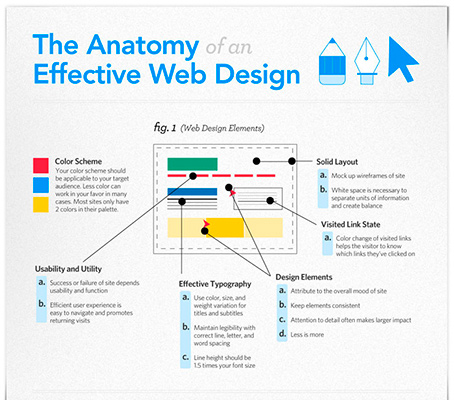In the past, internet sites were simple and concentrated on details. Navigation was straight, and style was for desktops. Now, user experience is crucial. Information overviews designs for very easy navigation. Receptive layouts suit various tools. Today, dark mode reduces strain, and minimal menus improve navigation. Interactive features engage individuals, and strong visuals stand apart. AI combination increases interaction. See how design has progressed to improve your online journey.
Early Days of Website Design
In the early days of website design, simpleness preponderated. Internet sites were standard, with minimal shades, fonts, and formats. The emphasis was on offering information instead of flashy visuals. Customers accessed the internet with slow dial-up connections, so speed and functionality were crucial.
Navigating menus were straightforward, commonly situated at the top or side of the web page. Websites were developed for desktop, as mobile browsing had not been yet common. Material was king, and designers focused on very easy readability over complicated layout components.
HTML was the main coding language made use of, and designers needed to work within its restraints. Computer animations and interactive functions were minimal contrasted to today's requirements. Sites were fixed, with little vibrant material or personalized customer experiences.
Rise of User-Focused Layout
With the development of website layout, a change in the direction of user-focused layout concepts has ended up being significantly famous. Today, creating sites that prioritize individual experience is essential for engaging visitors and accomplishing company objectives. User-focused style involves recognizing the requirements, choices, and actions of your target market to tailor the website's format, web content, and includes as necessary.
Developers currently conduct detailed study, such as individual studies and functionality screening, to gather understandings and comments directly from users. This data-driven method assists in creating user-friendly navigating, clear calls-to-action, and visually attractive interfaces that reverberate with visitors. By putting the user at the facility of the style process, web sites can provide an extra tailored and enjoyable experience.
Responsive design has actually also become an essential facet of user-focused design, guaranteeing that sites are maximized for numerous gadgets and screen sizes. This versatility enhances access and use, accommodating the diverse methods users communicate with web sites today. In essence, the surge of user-focused layout indicates a shift towards creating electronic experiences that prioritize the requirements and expectations of the end individual.
Modern Trends in Website Design
Check out the most up to date patterns shaping web design today. One popular fad is dark mode layout, offering a streamlined and contemporary appearance while lowering eye pressure in low-light atmospheres. One more key trend is minimal navigating, streamlining food selections and boosting user experience by focusing on essential elements. Incorporating best website design companies for small business -interactions, such as animated switches or scrolling impacts, can create an extra interesting and interactive site. Receptive style stays crucial, making sure smooth user experiences across different devices. In addition, utilizing strong typography and unbalanced designs can add visual rate of interest and accentuate particular material.
Incorporating AI technology, like chatbots for client support or personalized referrals, boosts customer involvement and enhances procedures. Ease of access has additionally come to be a considerable trend, with designers focusing on comprehensive style practices to deal with varied individual needs. Embracing sustainability by optimizing internet site performance for speed and performance is one more emerging pattern in web design. Working together with user responses and information analytics to repeat and boost style continually is crucial for staying relevant in the ever-evolving digital landscape. By accepting these modern-day trends, you can develop a visually appealing, straightforward web site that resonates with your target market.
Final thought
As you review the evolution of website style from the early days to currently, you can see exactly how user-focused design has become the driving pressure behind modern-day fads.
Accept the trip of change and adaptation in web design, constantly maintaining the individual experience at the forefront.
Remain current with the latest trends and technologies, and never stop developing your technique to develop aesthetically sensational and user-friendly sites.
Develop, adjust, and produce - the future of website design remains in your hands.
